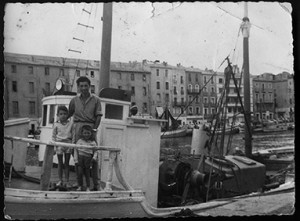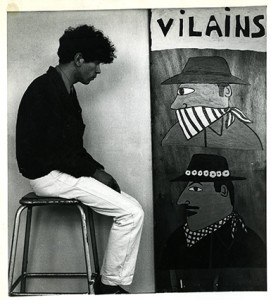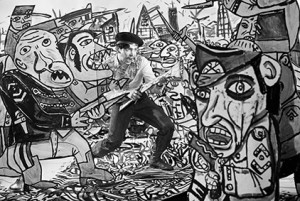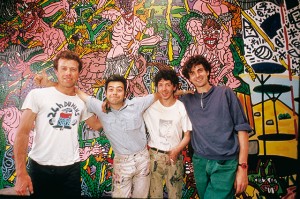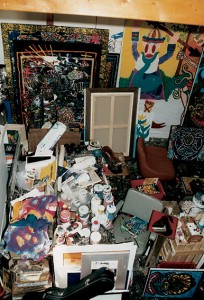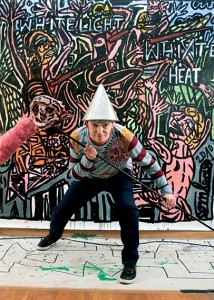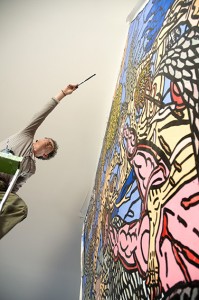The Academic Tattoos of 2006.
Ten years ago, I used a new technique for my first exhibition in Switzerland in 1994. I had collected some old drawings that are called « academic studies », technique and stylistic drawings that can be found in flea markets.
At first, I was looking for drawings representing busts and later full-scale characters, and then three-quarter profile, and later architectural studies. Most of these anonymous drawings by Art academy students represent historical and literary subjects, characters, scientists, famous sculptures, or imposed subjects meant to teach classical techniques of drawing and sculptures, and I re-drew over them.
It was like a game, I enjoyed tattooing these academic figures with my own lines. Invented, fantasied representations have emerged and transformed the vision of the academic image, which is turned into a background.
By doing many drawings with a rough thick line on these academic drawings, I found interesting to conjure with both the primitive aspect (which is modern too) and the European art classicism. It is a reflection on representation, a sort of discourse.
When I started this work twelve years ago, tattoos where becoming popular again. It has now become a trend. The practice of scarification was used by modern tribes, gangs and clans. The outcome is different but it was interesting to use this different technique and the relationship with this living art.
The Academic Tattoos, of the exhibition at Knokke, and the exhibition we had at Guy Pieters in Paris in 2006, became more and more complex. One day, I stuck the drawings on a canvas, framing them with a line, and painting a background with metal paint and bright colours. With this metal paint, I made flat areas of colors, one for the frame and the other for the background underlined with matt paint. The bright effect on the background and matt paint over-drawn results into an ensemble that plays with the variations of light. The drawings over the black and white characters have also been developed, and I gave them a sculptural effect while adding them extravagant hairstyles, with an academic basis. That is how the academic tattoo which was only a drawing came to be a truly painted canvas with many collages, light and colours play.
![[EN] Combas.com](https://www.combas.com/en/wp-content/uploads/sites/3/2016/01/logo-reseau.png)
